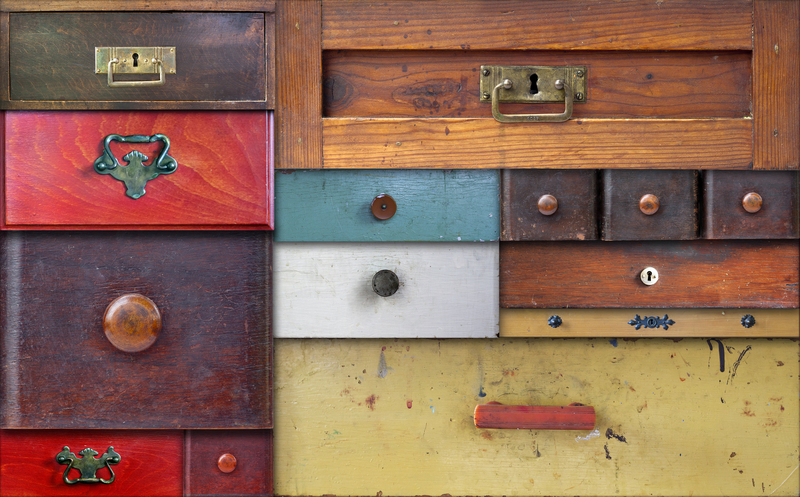Essential Things to Know Before Removing Large Furniture
Removing large furniture pieces from your home or office is a task that requires more than just muscle and motivation. From advanced preparation and necessary tools to safety considerations and disposal options, every step is important for a smooth process. Whether you're redecorating, relocating, or simply trying to free up space, knowing the crucial aspects beforehand can save you time, money, and potential injury. In this comprehensive guide, we'll cover all the essential things to know before removing bulky furniture to help ensure a seamless and safe experience.

Why Proper Planning Matters in Large Furniture Removal
Many people underestimate the complexities involved in removing oversized furniture. Without a detailed plan, you risk damaging your property, injuring yourself, and wasting valuable time. Effective preparation makes the process more efficient and helps avoid common pitfalls. Let's dive into the key considerations you need to keep in mind before starting any large furniture removal project.
1. Take Accurate Measurements
- Doorways and Hallways: Before attempting to move a heavy cabinet or sectional, measure all doorways, halls, and staircases along the removal path. Compare these measurements with the largest dimensions of your furniture to ensure a clear exit route.
- Furniture Dimensions: Don't rely on visual estimates. Use a tape measure to document the height, width, and depth of every large item you intend to move.
- Clearances: Remember to account for sharp turns, ceiling lights, railings, and low-hanging fixtures that might impede movement.
Making sure your furniture fits through all passageways prevents last-minute surprises and reduces the likelihood of damaging your walls or belongings.
2. Assess Furniture Disassembly Needs
- Check Manufacturer Instructions: Some large items like beds, wardrobes, and sectionals are designed to be partially or fully disassembled for easier transport. Look for assembly manuals or search for guides online.
- Use the Right Tools: Ensure you have screwdrivers, wrenches, Allen keys, or power drills handy. Keeping a small container for screws and bolts helps you avoid losing critical hardware.
- Label Components: Mark each part or snap photos for reference, especially for complicated assemblies. This makes reassembling much quicker and less confusing.
In most cases, disassembling large furniture into smaller pieces will simplify removal and minimize the risk of damage both to the item and your property.
3. Protect Your Floors and Walls
- Use Moving Blankets: Cover walls and door frames with padded blankets or towels to cushion any accidental bumps.
- Furniture Sliders: Place sliders under heavy pieces to protect hardwood floors or carpets while moving the item.
- Floor Runners: Lay runners down to safeguard against scratches, especially in high-traffic areas.
These precautions prevent costly repairs and keep your home's interior looking its best throughout the furniture removal process.
Gather Necessary Equipment and Resources
4. Invest in Proper Moving Tools
- Dollies: A sturdy furniture dolly or hand truck is invaluable for moving oversized items with minimal effort.
- Lifting Straps: Shoulder straps allow two people to lift heavy objects ergonomically, reducing strain on your back.
- Work Gloves: Protect your hands from sharp edges, splinters, and pinched fingers with a durable pair of gloves.
Having access to professional moving tools can make the difference between a painful, exhausting day and an efficient, injury-free move.
5. Enlist Enough Help
- Reliable Friends or Family: Never attempt to move large, heavy furniture alone. Recruit at least one or two strong helpers for an easier, safer process.
- Professional Movers: For especially large or awkward items like pianos or armoires, it may be best to hire trained professionals who have experience and insurance.
*Teamwork is essential* for both safety and efficiency when removing large furniture from your home or office.
Safety Tips for Handling Bulky Furniture
6. Use Proper Lifting Techniques
- Lift with Your Legs: Bend your knees, keep your back straight, and push up with your leg muscles. Avoid twisting or bending your back.
- Clear the Path: Remove any obstacles, rugs, or clutter before starting to move furniture. This reduces tripping hazards and allows for smoother movement.
- Don't Overexert: Take breaks as needed, stay hydrated, and avoid lifting weights beyond your capability.
Proper technique dramatically reduces your risk of back injuries and accidents during heavy furniture removal.
7. Dress Appropriately
- Supportive Shoes: Wear closed-toe, non-slip shoes that provide stability and protect your feet.
- Comfortable Clothing: Opt for fitted clothing that doesn't restrict your movement or get caught on furniture.
Plan for Furniture Transportation and Disposal
8. Arrange Suitable Transportation
- Type of Vehicle: Assess whether you need a pickup truck, van, or moving truck based on the size and quantity of furniture pieces.
- Loading Equipment: Use ramps and tie-down straps to load and secure items safely for transit.
- Secure Massive Items: Place heavier items on the bottom and anchor them to avoid shifting during the drive.
Planning out your transport options ensures that your valuable or antique furniture arrives in perfect condition at its new destination.
9. Consider Donation, Selling, or Recycling Options
- Donation: Many charities will accept gently used furniture, sometimes even providing free pickup services.
- Selling: Use local classifieds, social media marketplaces, or consignment shops to sell valuable pieces.
- Recycling and Disposal: If items are in poor condition, contact your local municipality about bulk waste pickup or search for recycling centers specializing in furniture.
Being environmentally conscious about old furniture removal can benefit both your community and the planet.
Prepare Your Home Before Removal Day
10. Protect Children and Pets
- Keep Out of Work Area: Ensure that children and pets are in a safe space away from moving furniture and equipment.
- Communicate with Family Members: Let everyone at home know the plan and route for moving large items.
11. Check for Hidden Obstacles
- Wall Fixtures and Decor: Remove shelves, clocks, pictures, and mirrors from paths to avoid breakage.
- Loose Carpets or Wires: Secure or move any loose cables or rugs to prevent trips and falls during the process.
Special Considerations for Certain Types of Large Furniture
Appliances
Disconnect appliances such as refrigerators, washers, or stoves at least 24 hours in advance. Drain water lines and secure cords to prevent any leaks or tripping hazards during heavy furniture removal.
Pianos and Safes
These exceptionally large and heavy items require special techniques, tools, and sometimes professional expertise. Attempting removal on your own can be dangerous and result in severe injury or property damage.
Glass Cabinets or Mirrors
Always detach glass doors, table tops, or mirrors from furniture. Wrap each fragile piece in thick padding with clear labels to help avoid accidental breakage.
Post-Removal Clean Up
- Vacuum and Clean: Once large furniture is out, thoroughly vacuum and mop the area to remove dust and debris that may have accumulated.
- Inspect for Damage: Double-check for any scuffs, scratches, or wall holes and address them promptly.

Frequently Asked Questions About Removing Large Furniture
How Do I Move Furniture Through Narrow Doors?
Try angling the furniture or disassembling it as much as possible. Remove doors from their hinges if necessary, and use sliders to guide the piece gently.
Can I Leave Furniture on the Curb for Pickup?
Check your local waste management guidelines. Some cities offer scheduled bulk pickup; others require a permit or restrict certain types of items.
Is It Safer to Hire Professionals for Large Furniture Removal?
If the item is very large, extremely heavy, or holds significant value, hiring professionals with proper insurance and expertise is often worth the investment.
Conclusion: The Smart Approach to Removing Large Furniture
Removing large or heavy furniture is not a one-size-fits-all endeavor. Thorough preparation, proper equipment, and prioritizing safety are the core essentials you must know before embarking on this task. Whether you're handling a DIY move or considering professional help, having this knowledge empowers you to protect your home, your belongings, and yourself.
By following the key things to remember before moving large furniture highlighted above - from measuring and disassembling items to using the right tools, safeguarding your space, and deciding on the most responsible disposal option - you can transform what seems like a daunting challenge into a manageable, even satisfying project.
*Ready to reclaim your space?* Keep these essential tips for removing heavy furniture in mind, and you'll enjoy a hassle-free upgrade to your home or office, every time.